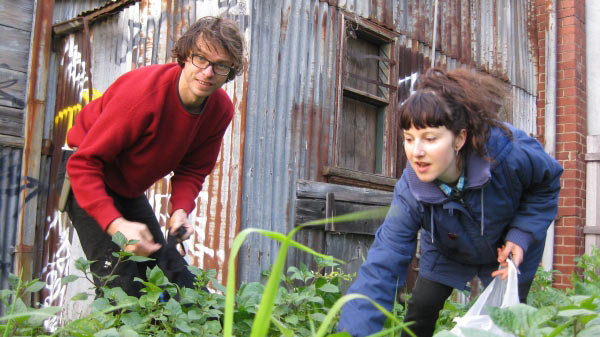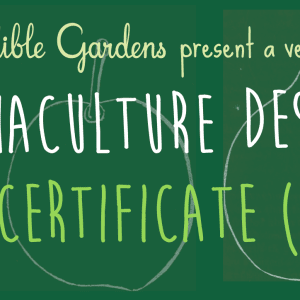When designing edible gardens, a site-specific problem will often crop up. One of the most enjoyable aspects of permaculture design for us is devising site-specific solutions to those problems. In this series we give some examples from our experiences in Melbourne, with a new one each month for the next few months (you can check out Part One here).
Part Two – The Magical Chicken Tunnel
Introduction
In late 2009 we were engaged to complete a design for a ¼ acre block in the Melbourne suburbs. It was for a family of four and the husband in particular was keen to grow lots of food.
The Site-Specific Design Problem
Most of the backyard was to be dedicated to the two little girls, meaning a grassed play area, sandpit, shade sail, cubby house, trampoline, and a large hills hoist washing line (for overseas readers, a hills hoist is as Australian as a kangaroo).
We located the chook house under the cubby to save space, and so the straw yard (a compost producer) would be adjacent to the main veggie patch (a compost consumer). Our problem was then how do we get the chooks from their house and straw yard to their run along the back fence? It was a problem because the washing line extended to the fence, meaning any sheets or large items of clothing would hang down and catch on even a low chook fence.
The Site-Specific Design Solution
This was the first time we used what we now call a magical chicken tunnel. Strictly speaking they are not magical, but it has a nice ring to it, we think. It is a mesh wire tunnel about 35cm high and 30cm wide through which the chickens can dart back and forth. Here’s the overall design (see a bigger image in this article):
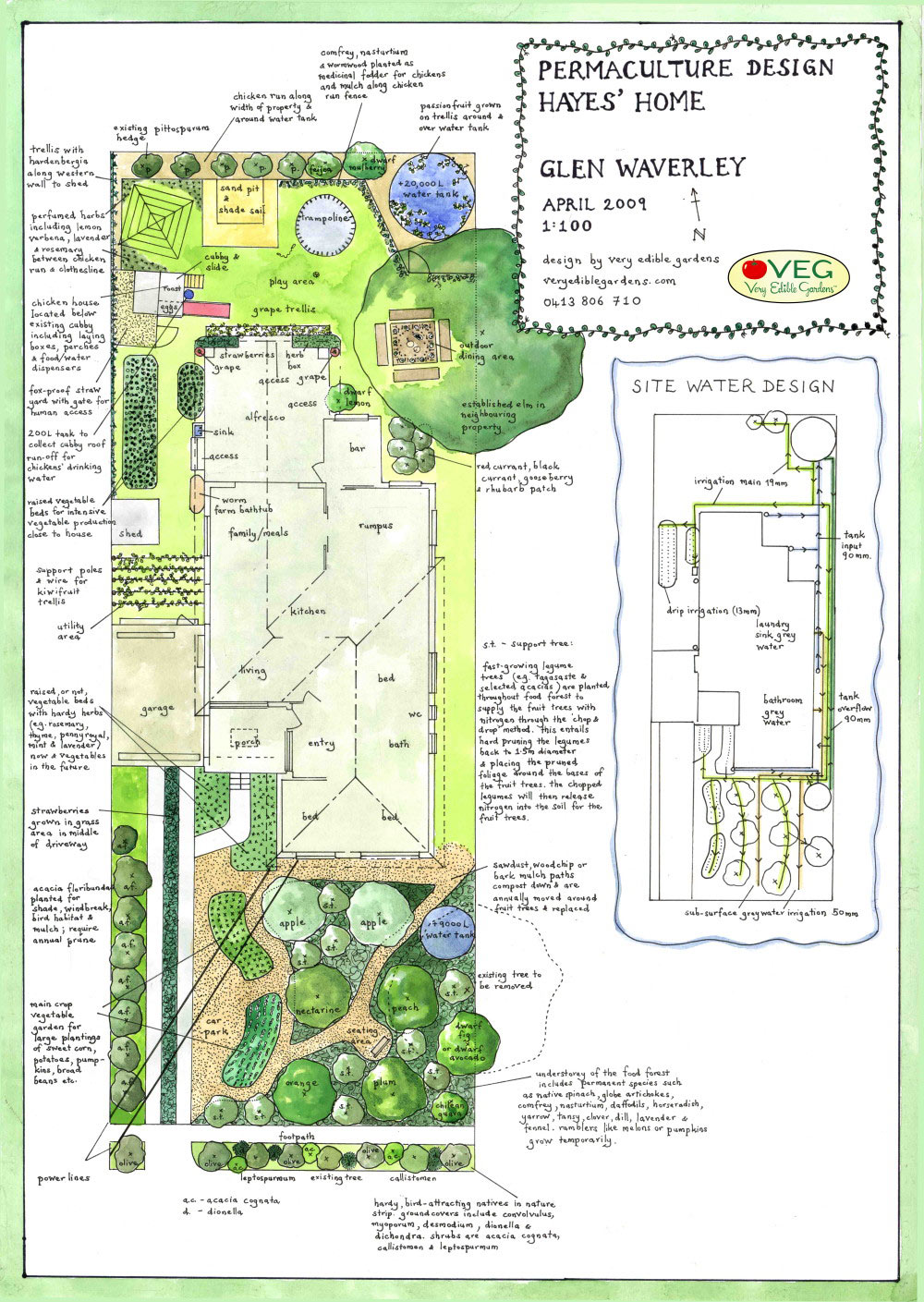
And here’s a close up of the location of our first magical chicken tunnel (inside red oval):
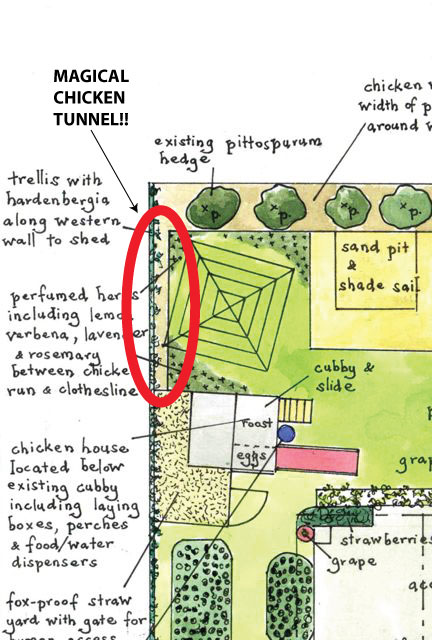
Here’s the tunnel in operation just recently:

zoom!

It is a solution we have used several times since. Chook tunnels have actually changed the way we think about and explain chickens and the benefits they can bring to an edible garden. For you can think of chickens as being like water. You catch and store water in a tank, and you use pipes and taps to transport and distribute that water around the garden as required – a pulse of water here, a pulse of water there. Similarly, you catch and store chickens in their house, and you can use tunnels, runs and gates to transport and distribute those chickens around the garden as required. A pulse of chook here, a pulse of chook there. Being able to easily pulse the power of chook is a wonderful thing, and beneficial to both chooks and plants.
Here’s another example (design indicating tunnel location then photos):
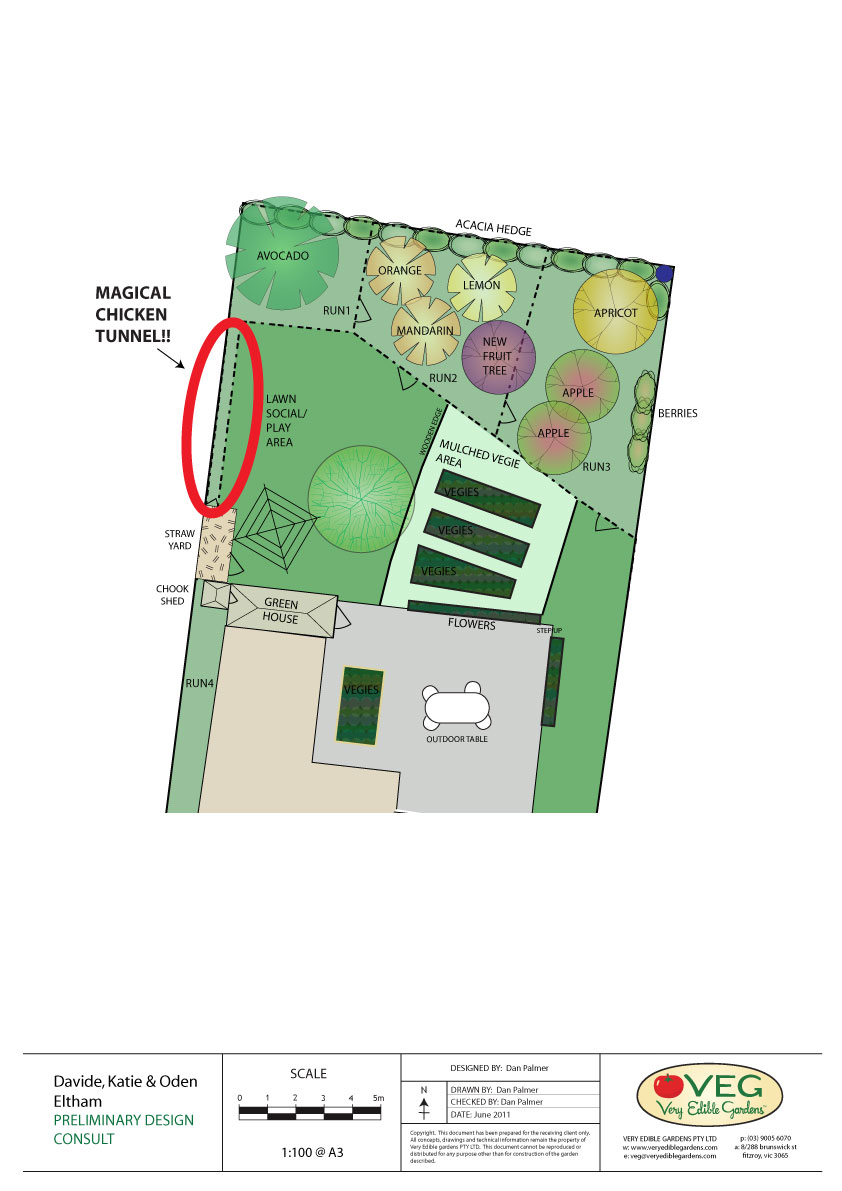


And another:

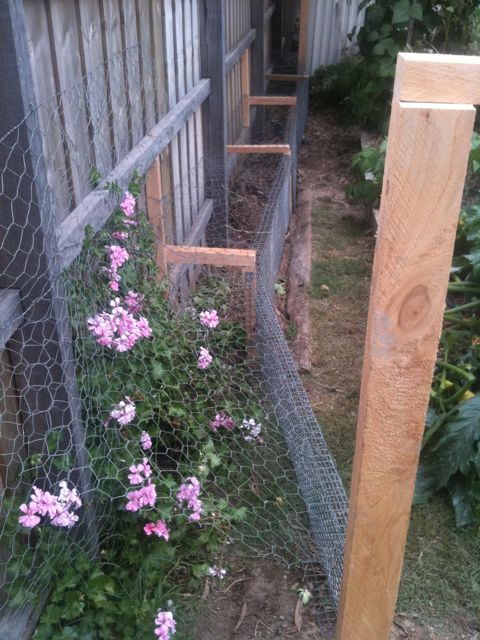
With a little youtube of Sassy testing it out (Sassy usually pretends to be a fox to test how fox proof our chook systems are but in this case she’s pretending to be a chook!):

